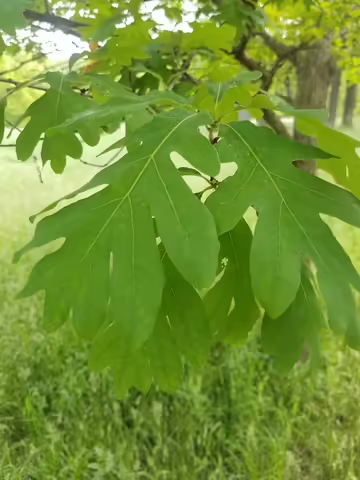Across the United States, our urban and natural forest ecosystems support a wide range of both flora and fauna. Trees are certainly the center of these plant communities and remain the most symbolic and recognized plant life on the landscape.
Have you ever wondered exactly how many native species are native to our state, or even our country?
Filling a Gap
A recent research collaboration between Morton Arboretum and others sought to address many of these questions. These researchers noted the lack of a universal list of US native tree species, based on a common definition. Believe it or not, there are varying definitions for what constitutes a tree and many of the existing lists differ in their definition, making it difficult to compile numbers on a national basis.
In the light of the first global tree list, published in 2017, the Morton Arboretum led this new effort to establish a “standardized checklist” of our native tree species and also categorized their relative conservation status. I found it fascinating to explore their checklist for a better understanding of both US and Illinois native tree populations.
Globally, around 60,000 tree species have been formally described. The new checklist identified 881 tree species that are native to some part of the contiguous US. Out of those 881 species, 294 are endemic to the US, meaning they only occur naturally in the US.
By state, the most tree species in the US occur in Florida (338), Texas (320) and California (225), respectively. For comparison, Illinois was not too far behind with 196 native tree species.
Seeing Texas and Florida at the top of the list was confusing at first, but after considering that a more tropical climate will typically have higher species diversity, it makes sense. A map of these data also paints the picture, with more northern states exhibiting much less diversity. In general, a lot of our tree species diversity is centered on the Southeast United States.
I was thrilled to see that the genus Quercus (oaks) holds the largest number of tree species (85) in the US but surprised to see that Crataegus (hawthorns) is a close second at 84 species. It’s also worth mentioning the next few on that list which are Salix (willows) with 45 species and the lone conifer genus at the top, Pinus (pines) with 38 species.
It’s exciting to see that oaks represent the most species nationwide because the genus Quercus is noted for its high biological value. Oak ecosystems support the most species of flora and fauna of any forested ecosystem. Individually, research has shown that some oak species are able to support over 400 insect species and a plethora of other fauna that either rely on the oak or its supported insects for food. Illinois is home to 21 native oak species, representing about 25% of US oak diversity, which is relatively high compared to many other states.
In Illinois, we do have quite a few native hawthorns species (22), but it was still surprising to see such a high number of hawthorns spread around the country. I tend to take hawthorn diversity for granted as they all are very similar, requiring some serious botany skills to identify down to species. They are also known for their high ecological value, supporting a variety of native birds with their berries and pollinators with their blooms.
What Does It Mean?
This report also accounted for the conservation status of each native species using two international threat assessment platforms, the International Union for the Conservation of Nature Red List and NatureServe. They found that 11-16% of our native species are threatened with extinction and both oaks and hawthorns topped the list of threatened species.
While it’s quite interesting to see all these numbers, it’s disheartening to read that 11-16% are threatened with extinction. These researchers cited invasive pests and diseases and climate change as primary threats to our native trees, which are both predicted to increase in coming decades.
The findings of this report further emphasize the need to add ecologically valuable, native species to the landscape, such as oaks. Although our garden spaces cannot replace healthy natural ecosystems, they can provide some refuge for native flora and fauna.
References
- Beech, E. et al. 2017. GlobalTreeSearch: The first complete global database of tree species and country distributions. Journal of Sustainable Forestry. 36(5), 454-489. https://doi.org/10.1080/10549811.2017.1310049.
- Carrero, C. et al. 2022. Data sharing for conservation: A standardized checklist of US native tree species and threat assessments to prioritize and coordinate action. Plants, People, Planet. 1-17. https://doi.org/10.1002/ppp3.10305.
